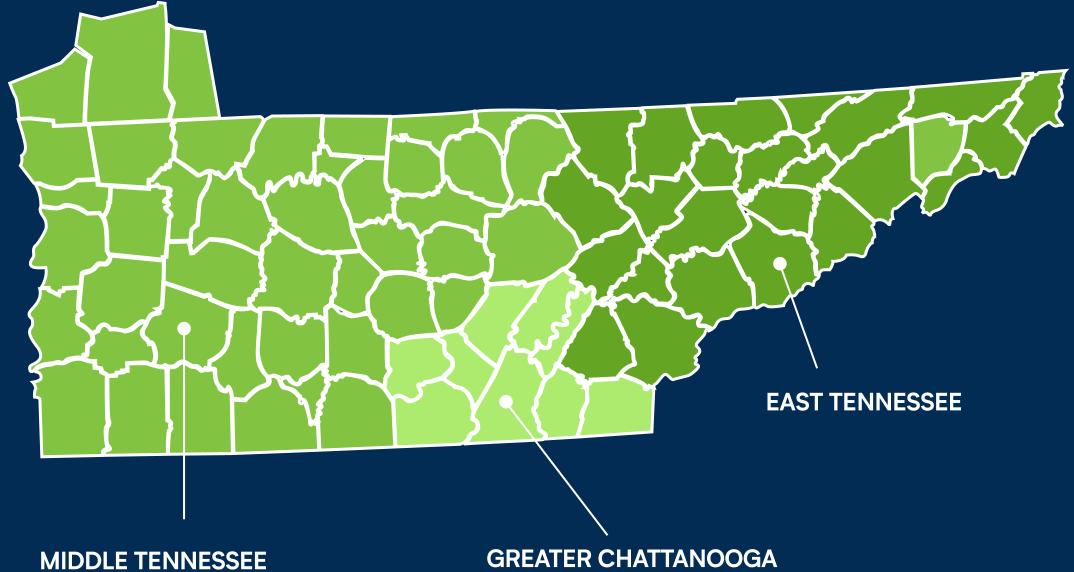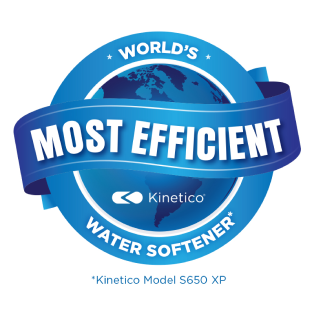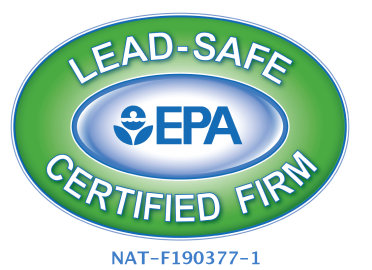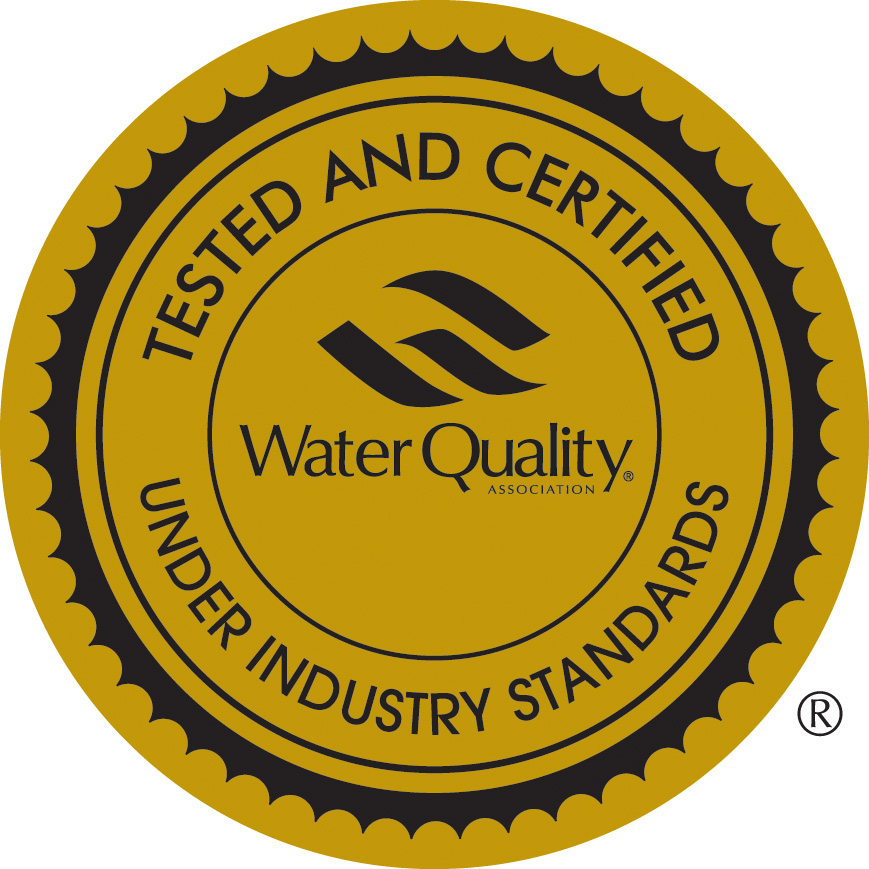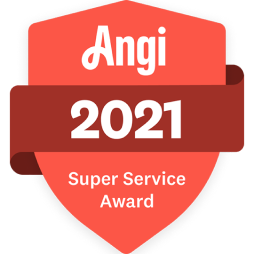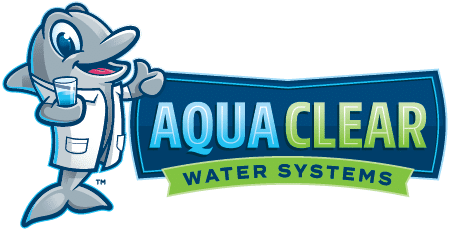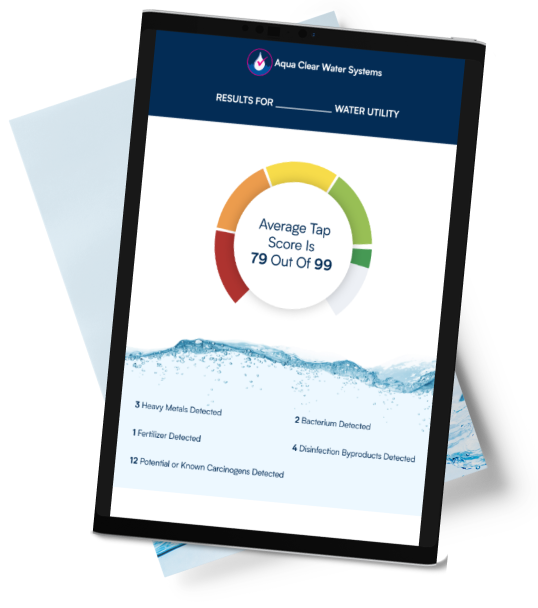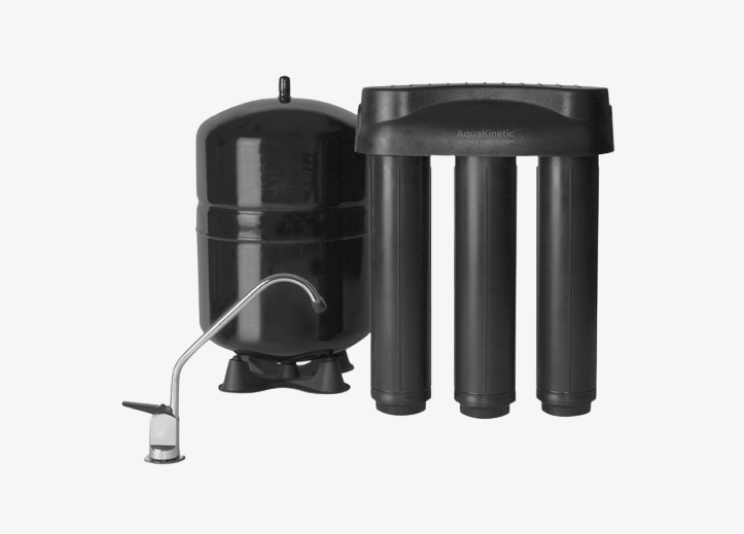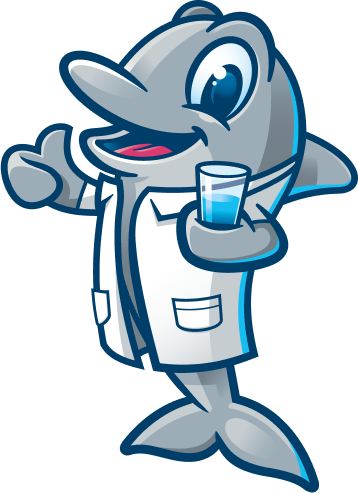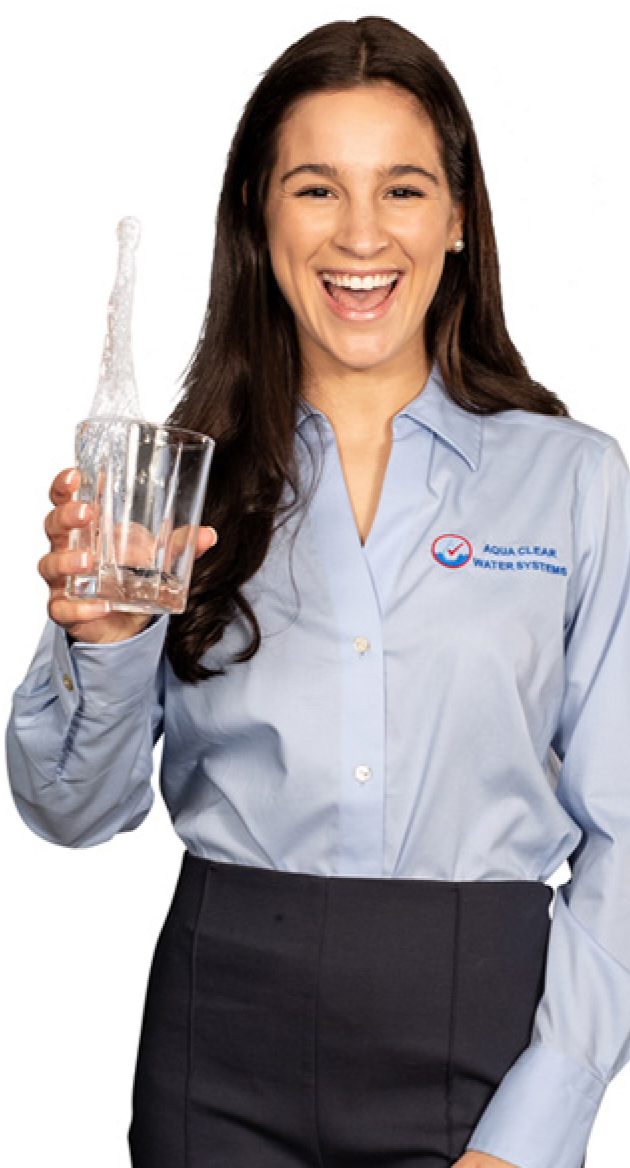Reverse Osmosis Drinking Water Systems
What are the benefits of reverse osmosis filtered water?
With a reverse osmosis filtration system, you can say goodbye to bottled water forever. Instead, your household will receive soft, clean reverse osmosis filtered water that will play nicely with your appliances (unlike hard water, which can clog up appliances such as washing machines, sprinklers and dishwashers. Plus, you can have complete peace of mind every time you drink water, knowing it's clear of harmful contaminants.
To discover more about the benefits of reverse osmosis filtered water, plus info about installation and maintenance, check out our FAQs below, or give us a call regarding water softener systems for homes.
Reverse Osmosis Filtered Water is the Best and Purest Available
While an R.O. water system may be more expensive than other types of filtration, it is by far the most effective. A reverse osmosis drinking system is capable of removing nearly every type of contaminant so your water is as pure and fresh tasting as it can be. If you have a specific type of contaminant you want to remove, such as chlorine or fluoride, the system can target that.
When you're dealing with your family's health and well-being, you can't afford to cut corners or take any risks. So don't buy a system just because it's cheap because the reason for that may be that it's low quality and won't do the job.
Drinking Water Systems - Reverse Osmosis
While a reverse osmosis drinking system might sound complex and scientific, it's actually an incredible investment that can take your water to the next level while requiring minimal maintenance. Here are some questions we're commonly asked by our customers about our reverse osmosis filtration systems.
Is a reverse osmosis system difficult to install?
Although some reverse osmosis systems come with DIY installation kits and clear instructions, others may require professional installation. If you are not completely confident in your plumbing skills, it's recommended to seek help from a professional plumber or water treatment specialist to ensure proper installation and minimize the risk of leaks or other issues down the line.
For more information on this topic or if you need water treatment systems for well water feel free to get in touch via phone, email or our webiste regarding whole home water filter systems.
While a reverse osmosis drinking system might sound complex and scientific, it's actually an incredible investment that can take your water to the next level while requiring minimal maintenance. Here are some questions we're commonly asked by our customers about our reverse osmosis filtration systems.
How can I identify a high-quality r.o. water system?
There are several indicators that demarcate low-quality reverse osmosis models from their peers on the market. Some of these indicators include:
- Flexibility. Being able to tailor the filters to manage current and potential contaminants suggests that the RO system is built for long-term use.
- Flow rate. A higher flow rate means less waiting for clean water from your taps and showers. A truly high-end model should be able to deliver negligible or zero delays, ensuring maximum convenience for your household.
- Added features - one of the most useful features an RO system can offer is a monitor that lets you know when it's time to change the filter, taking the guesswork out of maintenance.
A reverse osmosis - sometimes shortened to a r.o. water system - is a sophisticated water filtering system. When it comes to ensuring clean drinking water, you can never be too careful, which is why our state-of-the-art reverse osmosis drinking systems have consistently been one of our bestsellers.
How Does a Reverse Osmosis Drinking System Work?
You may be wondering how exactly does a drinking water system use reverse osmosis? Well, as a water purification system, it's fairly straightforward: using a semipermeable membrane, contaminants are filtered out while fresh water flows in. The dissolved contaminants are left to accumulate at one side of the membrane, making it a reliable and sustainable all home water filter.
Typical contaminants that you could you a reverse osmosis drinking system to remove could be herbicides and pesticides, bacteria, viruses, heavy metals (such as lead or mercury), and dissolved particles, among others. As a water filtration solution, it's helpfully quite comprehensive, meaning the water you receive should be of the highest quality.
Frequently Asked Questions About Reverse Osmosis
Is reverse osmosis system good for drinking water?
Reverse osmosis is the most efficient method of purifying water, removing almost all contaminants that are present. Reverse osmosis contaminant removal is highly effective, ensuring that harmful substances such as heavy metals, bacteria, and dissolved salts are thoroughly eliminated from your water supply. As such, it produces the purest water that is perfectly safe for drinking.
Some critics argue that water produced by reverse osmosis is devoid of beneficial minerals and has a flat taste. However, this can be easily remedied by a remineralization process and, even if not, is a small price to pay to benefit from pure water.
The benefits are so great that many desalination projects use reverse osmosis to purify seawater and make it fit to drink. The process removes the threat to health that many contaminants pose and makes food that’s cooked in it much tastier as well as safe. In general, it’s perfectly safe for all uses, including drinking.
Is it OK to only drink reverse osmosis water?
Reverse osmosis is widely used because it’s the most effective way of purifying water. However, it does have its critics who voice health concerns:
- Reverse osmosis removes beneficial minerals. It is true that the process removes both good and bad minerals. However, drinking water is for rehydration, not nutrition, the latter being obtained from food. As long as you have a healthy, well-balanced diet, the omission of beneficial minerals from your water will have little or no effect. If you do have any concerns, the inclusion of a remineralization filter will add back beneficial minerals.
- Reverse osmosis water is acidic. It is slightly more acidic at a pH level of 6.0-6.5 against a pure water level of 7.0-7.5. However, this is less acidic than carbonated drinks, fruit juice, tea, and coffee, and the EPA states that water with a pH level of 6.5-8.5 is safe to drink.
Anyone suffering from gastrointestinal ulcers or acid reflux should possibly avoid reverse osmosis water. However, the same applies to any acidic food or beverages.
In general, reverse osmosis water is perfectly safe to drink and it’s only necessary to be sensible and have a recommended, balanced diet.
What is the disadvantage of reverse osmosis water?
Reverse osmosis is the most effective water purification process but has some disadvantages. It:
- produces a lot of waste water, up to three gallons for every gallon of pure water. Our systems are super efficient so waste the least amount of water possible for a reverse osmosis system.
- is the most expensive type of water filtration at up to $10,000 for a whole house reverse osmosis system although this is justified by its greater effectiveness
- is the most difficult to install due to amount of pre filtration needed for whole house filtration
- removes beneficial as well as harmful minerals
- produces water that is slightly acidic.
Installing a modern, high-quality system can reduce the waste water considerably and will have a long lifespan as well as reducing your reliance on expensive bottled water. You can also store the waste water and use it for garden watering, cleaning, washing and toilet flushing. Any loss of beneficial minerals can easily be counteracted with a balanced diet while any perceived acidity is well within recommended limits.
Reverse osmosis is the most reliable purification system and any of the alleged disadvantages can easily be overcome.
Is reverse osmosis water good for the kidneys?
Kidneys undertake several crucial tasks — filtering waste from the blood, managing fluid levels, regulating blood pressure, and ensuring electrolyte balance. There are, however, stated concerns that reverse osmosis water can interfere with these functions because of its lack of minerals and high acidity.
Reverse osmosis does remove a very high proportion of contaminants from water and so eases the workload on the kidneys, which is good for your kidney health. And because minerals are removed from water, the formation of kidney stones is less likely.
As regards acidity, the pH level of 6.0-6.5 is well within safe limits and the body’s systems are highly effective at maintaining the correct pH balance so any effects from reverse osmosis water are minimal.
The absence of beneficial minerals should also not be a problem because the vast majority of our nutrition is obtained from what we eat, not the water we drink. So a balanced diet is far more important than mineralized water.
On balance, the effect of reverse osmosis water on kidneys is beneficial and any slight drawbacks can be easily overcome.
Is it safe to drink RO water daily?
If you work on the principle that water is for rehydration and food is for nutrition, then drinking reverse osmosis water every day is perfectly safe. You need the water you drink to be free from contaminants that will harm your health and damage your property, and reverse osmosis is the most effective method to remove contaminants
There are allegations that reverse osmosis removes beneficial minerals as well as harmful ones, which is true. However, since you get nutrition from food, a lack of it in water is of little consequence. If you are concerned, it is perfectly possible to add minerals back to your water with mineral drops or a remineralization filter.
Acidity levels are also higher than for pure water but are well within recommended levels and no more than for fruit juice, carbonized drinks, tea, and coffee. So all things in moderation applies here and you should only be wary if you suffer from acid reflux or gastrointestinal ulcers.
Reverse osmosis water has the least level of contaminants of any filtered water and so is perfectly safe to drink all the time, providing you follow health guidelines.
Is reverse osmosis expensive?
Reverse osmosis is the most comprehensive water filtration system available, removing more contaminants than any other type. But, because of that, it’s generally the most expensive, coming in at up to $10,000 for a complete whole house system compared to as little as $1,000 for a basic whole house system and much less for a point-of-use system such as a pitcher or refrigerator filter.
The price of these systems can be increased further by high installation costs due to the need to fit a waste water outlet that requires professional help. You also need to test your water to see if this type of system is justified, although we can arrange this for free.
To mitigate the overall costs, always buy a quality system and have it professionally installed. This will ensure effectiveness and longevity, particularly for the main membrane which can last up to 10 years. We will install a system that will remove contaminants effectively, protecting your family’s health over a long period and ensuring that, whatever the cost, you won’t be incurring it again for a long time.
Can you drink waste water from reverse osmosis?
Reverse osmosis produces the purest water because it removes the most contaminants. However, these contaminants are generally flushed away as waste water, which you should never drink because the level of impurities is far greater than in the water before it was filtered.
Water with a total dissolved solids (TDS) level below 150 parts per million (ppm) is reckoned to be excellent for drinking while the waste water may have a level above 550 ppm, depending on the level of contamination.
The reverse osmosis process aims to protect the health of you and your family so drinking the waste water will mean you are putting yourselves in even greater danger. However, the water doesn’t have to go to waste because you can run the waste outlet pipe into a storage tank and then extract the waste water, possibly using a submersible pump, for a variety of purposes:
- Garden and indoor plant watering is the best use of reverse osmosis waste water because plants will generally benefit from the minerals in the water and a TDS level of up to 2,000 ppm is suitable. it’s usually best to test on plants for 2-3 weeks and see which benefits most.
- Household cleaning can include mopping floors, cleaning bathrooms, and washing clothes, although you may want to mix with regular water to eliminate residue if TDS or salt content is high.
- Washing cars can use 15-75 liters per car and is safe with a TDS level of 1,200-1,500 ppm. If higher, mix with regular water.
- Toilet flushing is an ideal use for waste water although this may be less practical.
So, although you must never drink reverse osmosis waste water, it need not go to waste.
Reverse Osmosis Systems
Does reverse osmosis really purify water?
Yes, reverse osmosis (RO) is highly effective, removing up to 99% of contaminants including heavy metals, bacteria, viruses, and dissolved salts. This process ensures that the water is safe and tastes clean.
What is the lifespan of a reverse osmosis system?
With proper maintenance, an RO system can last 10-15 years. Key components have varying lifespans:
- RO membrane: 10-15 years
- Pre-filters and post-filters: 12-24 months
Regular maintenance extends the system’s overall lifespan.
Is reverse osmosis good for whole house?
RO is excellent for drinking water but not ideal for whole-house use due to high costs and water waste. Whole-house systems typically use activated carbon and sediment filters, which are more practical and cost-effective for large volumes of water.
Is reverse osmosis cheaper than bottled water?
Yes, over time, an RO system is more cost-effective than buying bottled water. Despite the initial and maintenance costs, using an RO system is environmentally friendly, reducing plastic waste.
Does RO remove pesticides?
Yes, reverse osmosis effectively removes pesticides and other organic chemicals, ensuring safe drinking water.
Which water filter removes the most contaminants?
Reverse osmosis systems remove the widest range of contaminants, including heavy metals, bacteria, viruses, and dissolved solids. Combining RO with other filters like activated carbon and UV filters provides comprehensive water purification.
A reverse osmosis drinking water system is highly effective in removing a wide range of impurities, making your drinking water exceptionally clean and safe.
Say Goodbye to Contaminants
Request More Information Today.
We’re Trusted By Some Of Most
Iconic Companies In The USA













10,000+ East & Middle Tennessee Clients Love Our
Whole House Water Filtration Systems… And
96% Would Buy Again If They Ever Move!
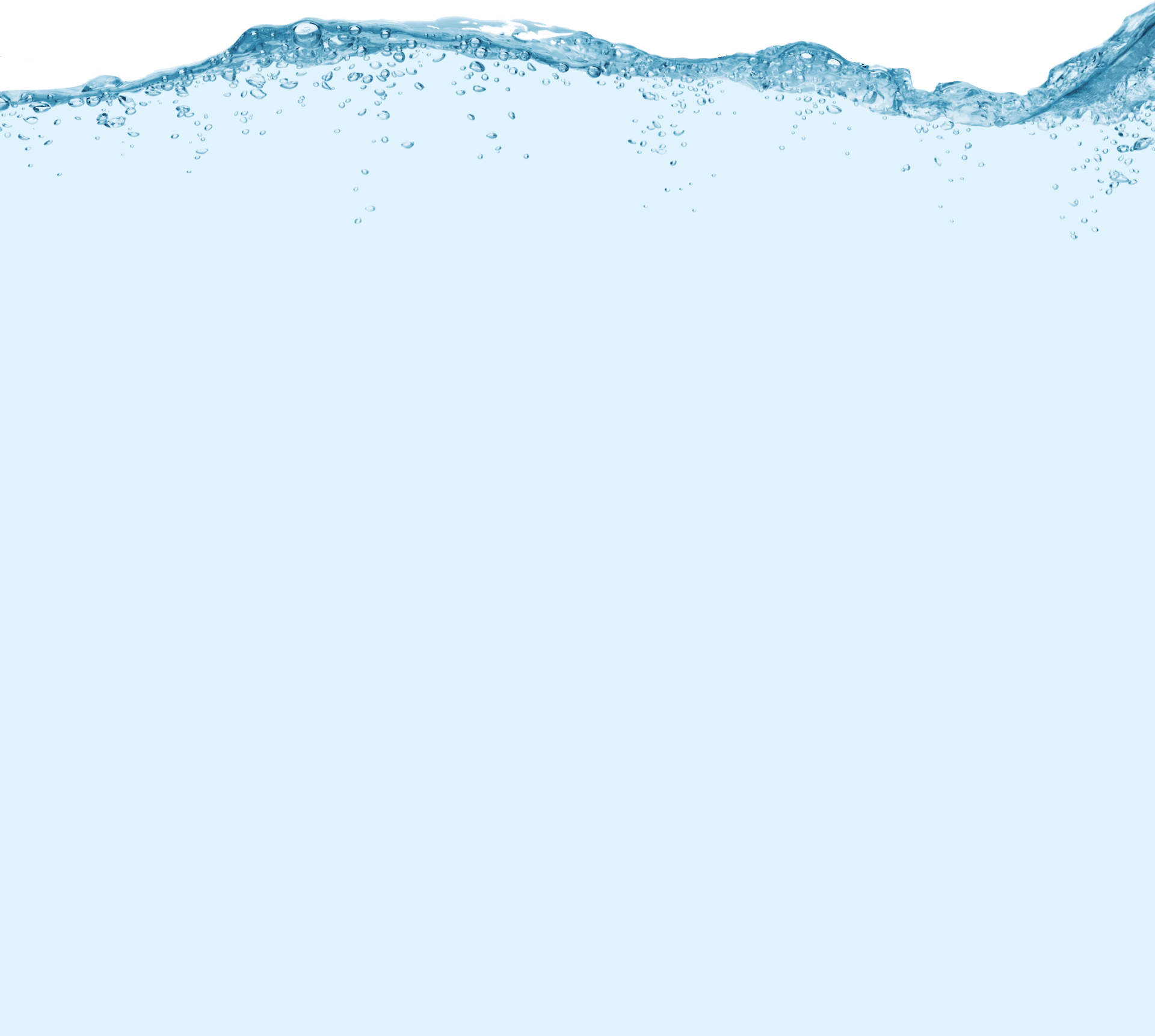
READY TO GET STARTED?
Claim Your FREE At Home Water Test And Our
Qualified Water Technicians Will Show You
How You Can Save Thousands And Improve
Your Health With Soft, Pure Water!
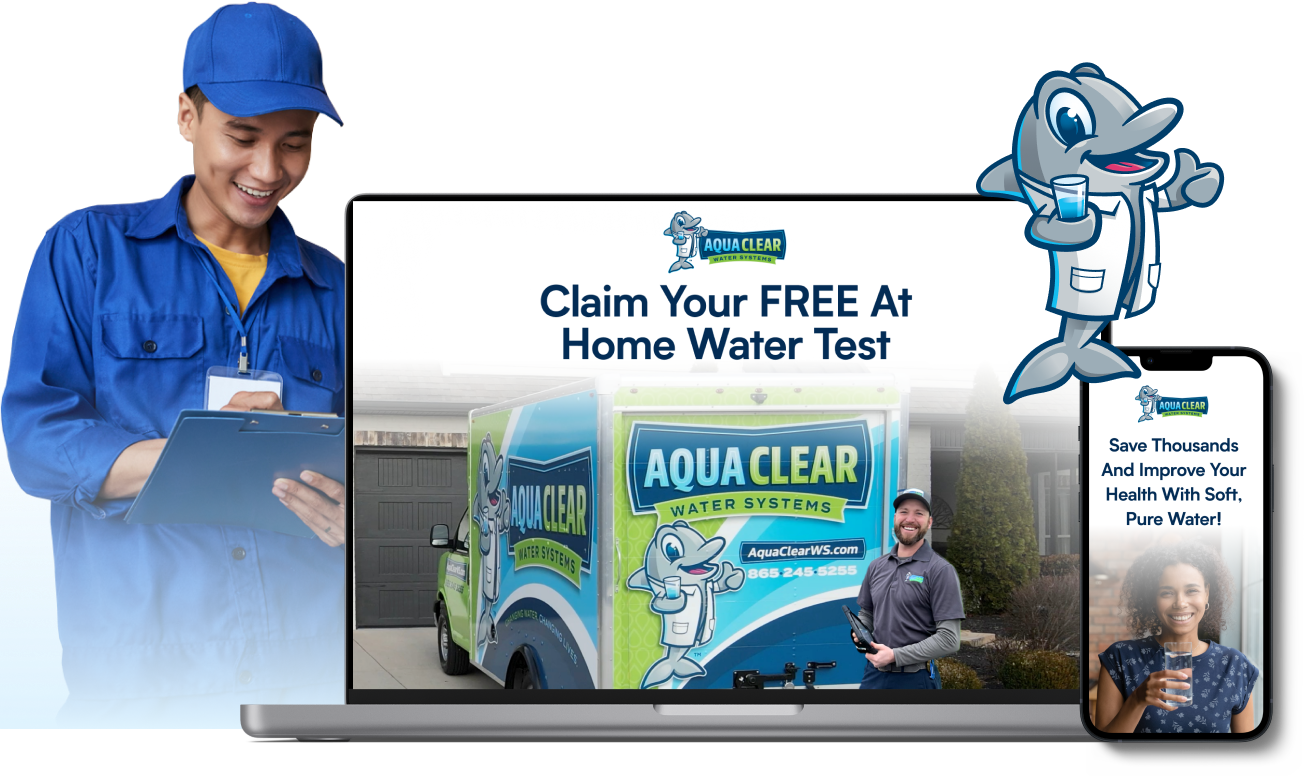
Don’t risk your family’s health! Book a free water test with our qualified technicians to find out what harmful impurities are causing the most damage in your home. Plus, get a customized recommendation for the perfect system to solve your water concerns!

We Service All of East & Middle Tennessee
Aqua Clear Water Systems has been serving the communities in East & Middle Tennessee for almost 2 decades
